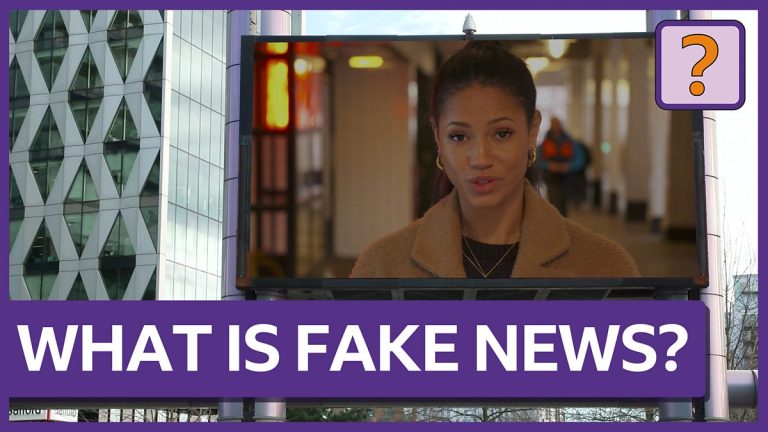The Pervasive Nature of Fake News in the Social Media Age
The proliferation of social media has fundamentally altered the way news is consumed and disseminated, creating a 24/7 news cycle that constantly pumps information into our feeds. From Instagram and Facebook to Snapchat and even TikTok, news, in all its forms – celebrity gossip, political developments, sports updates, and even everyday occurrences – is readily available at our fingertips. This constant barrage of information, however, raises critical questions about the veracity of the content we encounter. With the rise of “fake news,” a term frequently employed but often misunderstood, the line between fact and fiction has become increasingly blurred.
Recent studies reveal a concerning trend: a significant portion of young people struggle to identify fake news, leading to a widespread erosion of trust in news sources. This skepticism poses a significant challenge to informed decision-making and civic engagement. The ease with which misinformation can be created and anonymously shared online further complicates the issue, turning the digital landscape into a minefield of distorted narratives and outright fabrications. The consequences of fake news can be far-reaching, impacting individuals, communities, and even entire nations.
Understanding the Nuances of Fake News
Distinguishing between disinformation and misinformation is crucial in understanding the landscape of fake news. Disinformation refers to deliberately fabricated content designed to mislead, while misinformation involves the unintentional spread of false information. Both can be equally damaging, especially in a hyper-connected world where information spreads at lightning speed. Even humorous, satirical content, when taken out of context, can morph into misinformation, as evidenced by the case of The Onion’s satirical article about Kim Jong-un, which was mistakenly interpreted as fact by some international audiences.
Clickbait, another prevalent form of fake news, often employs sensationalized headlines and misleading links to attract clicks and generate revenue. While not all clickbait is necessarily fake, the pursuit of clicks can incentivize the spread of misleading information. The lure of a "free iPad" or the shocking headline of a celebrity endorsement can lead users down a rabbit hole of misinformation, demonstrating the manipulative power of clickbait tactics. The issue extends beyond mere disappointment; the constant bombardment of exaggerated or fabricated stories erodes trust in genuine news sources, leaving audiences unsure of where to turn for reliable information.
The Enduring Influence of Propaganda in a Digital Age
Propaganda, the deliberate manipulation of information to influence public opinion, represents one of the oldest forms of fake news. While previously disseminated through traditional channels like leaflets and broadcasts, the internet and social media have amplified its reach and impact. Now, anyone with an internet connection can leverage these tools to promote their agenda, regardless of its veracity. The consequences can be particularly damaging in the political sphere, where decisions based on false information can shape elections and influence policy. The ease with which propaganda can be spread online underscores the urgent need for media literacy and critical thinking skills.
Navigating the Information Landscape: The Importance of Critical Engagement
The pervasiveness of fake news requires a proactive approach to information consumption. Developing a critical mindset is essential to navigating the digital landscape and separating fact from fiction. Before sharing any information, individuals should pause and consider the source, look for corroborating evidence, and be wary of sensationalized headlines. Thinking critically about the potential consequences of sharing unverified information is paramount. Just as we would be upset by false rumors spread about ourselves or feel betrayed by lies from trusted figures, we must recognize the potential harm of propagating misinformation online.
Empowering the Next Generation: Combating Fake News Through Media Literacy
The challenge of fake news requires a multi-pronged approach, encompassing media literacy education, responsible journalism, and critical engagement from individuals. Journalists undergo extensive training and adhere to strict ethical standards to ensure the accuracy and reliability of their reporting. Crucially, they are accountable for their mistakes, issuing corrections and apologies when necessary. This accountability contrasts sharply with the often anonymous nature of online misinformation, where creators can easily avoid responsibility for the content they produce.
The younger generation, digital natives immersed in the world of online information, holds the key to combating fake news. By fostering critical thinking skills and promoting media literacy, we can empower them to become discerning consumers of information, capable of identifying and resisting the allure of fake news. This involves understanding the various forms of misinformation, recognizing the motivations behind its creation, and developing strategies for verifying information before sharing it. By becoming more aware of the tactics employed in fake news, young people can become the generation that turns the tide against misinformation, creating a more informed and trustworthy digital landscape for all.


